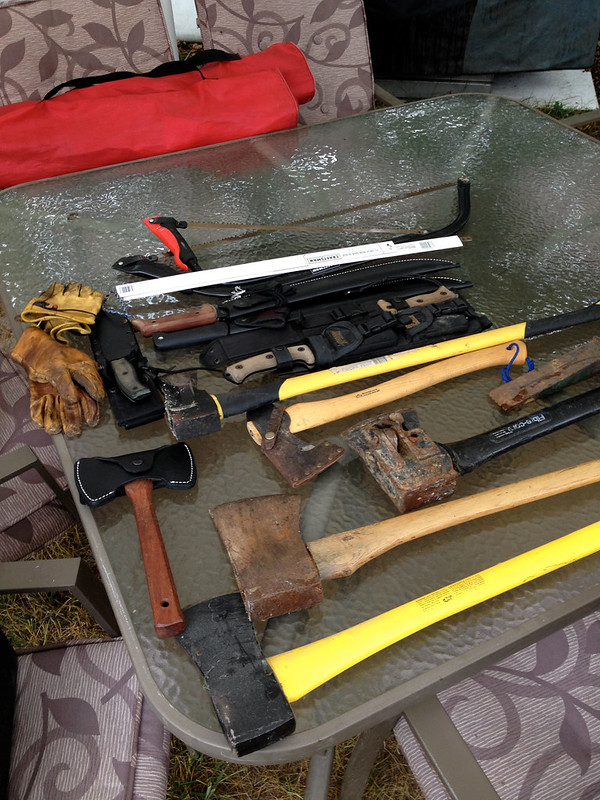Petamocto
Well-Known Member
- Joined
- Dec 2, 2012
- Messages
- 45
- Reaction score
- 0
Hello,
I am starting to notice a trend that despite my best efforts to launch on low wind days, every once in a while a rocket manages to go higher and farther than I thought, and manages to just make it to the treeline and park itself right at the top.
Shy of cutting down every tree that it gets stuck in, what is the best way to recover these?
The method I have had very grudging success with is connecting a lot of very long and skinny things together from my garage, like old curtain rods and other nick knacks, but this seems to have a limited range of 20' or so. Beyond the 20' mark and it starts to get way too long, wobbly, and flexible.
Of course the vast majority of the time my rockets are getting stuck, it seems to be in the 20-40' range, and it's never in a tree that I can climb.
I think the ideal pole would be something that is skinny and light but still strong, but even after checking out hardware stores the best thing I could find was 3/4" plastic PVC that comes in 10' lengths, but even those get really wobbly when you put a couple together. They didn't have any 1-2" pipe that I think may be perfect, it was just either 3/4" which was too skinny or the 3" stuff that is way too thick/heavy for a 40' long tree pole.
So what have you guys come up with? Either the best material to make a telescoping pole out of, or something else outside the box that I hadn't thought of.
I've got an Estes V2 that I spent a lot of time on perched in the park by my house and I'd really like to get it before the next snow/rain.
Thanks everyone.
I am starting to notice a trend that despite my best efforts to launch on low wind days, every once in a while a rocket manages to go higher and farther than I thought, and manages to just make it to the treeline and park itself right at the top.
Shy of cutting down every tree that it gets stuck in, what is the best way to recover these?
The method I have had very grudging success with is connecting a lot of very long and skinny things together from my garage, like old curtain rods and other nick knacks, but this seems to have a limited range of 20' or so. Beyond the 20' mark and it starts to get way too long, wobbly, and flexible.
Of course the vast majority of the time my rockets are getting stuck, it seems to be in the 20-40' range, and it's never in a tree that I can climb.
I think the ideal pole would be something that is skinny and light but still strong, but even after checking out hardware stores the best thing I could find was 3/4" plastic PVC that comes in 10' lengths, but even those get really wobbly when you put a couple together. They didn't have any 1-2" pipe that I think may be perfect, it was just either 3/4" which was too skinny or the 3" stuff that is way too thick/heavy for a 40' long tree pole.
So what have you guys come up with? Either the best material to make a telescoping pole out of, or something else outside the box that I hadn't thought of.
I've got an Estes V2 that I spent a lot of time on perched in the park by my house and I'd really like to get it before the next snow/rain.
Thanks everyone.








